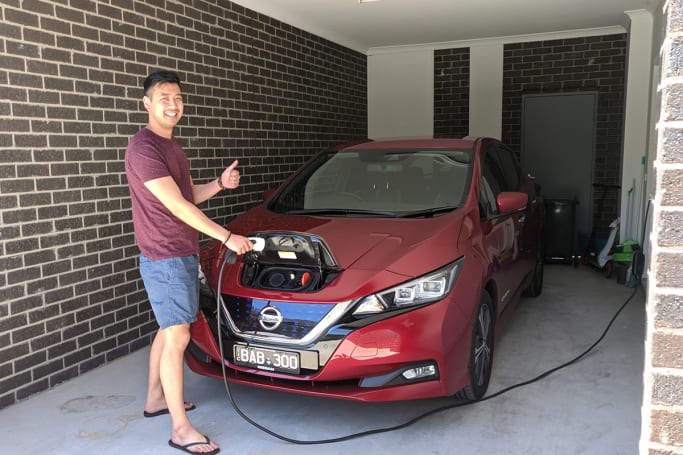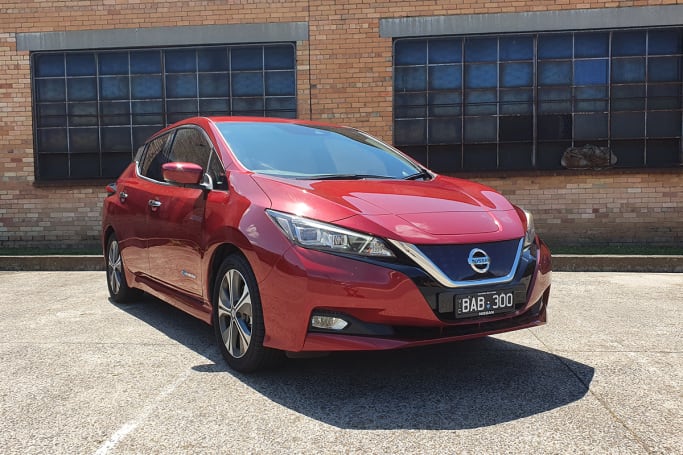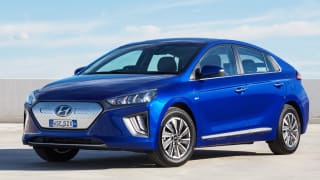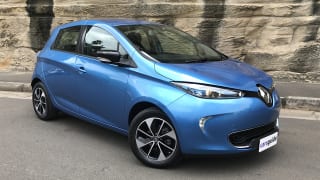Love them or hate them, electric vehicles (EVs) are here and they are the future of motoring.
One of the most affordable emissions-free vehicles on the Australian market is the second-generation Nissan Leaf, which kicks off at $49,990 before on-road costs in a single, highly specced variant.

Let’s run through the numbers first. With a single electric motor spinning the front axle, the Nissan Leaf produces 110kW of power and 320Nm of torque. Fitted under the floor is a 40kWh lithium-ion battery that provides 270km of driving range before needing a recharge.
Now, on paper that 270km range might seem miniscule, after all, you travel 400-500km a week in your internal-combustion car, right? Doing some quick back-of-the-envelope maths means you’d need to charge the Leaf halfway through the week to ensure you get the full commuting potential, and that is discounting any incidental trips you might make in that time.
Read More: Nissan Leaf 2020 Review
The last thing you want is to be stranded somewhere on your way to/from work in an EV that’s run out of juice – how embarrassing would that be! You might add all this up and go, “yeah, nah, an electric vehicle isn’t going to work for me”, but you’d be surprised at how easily it can slot into your day-to-day life without much, if any, inconvenience.
For starters, we want to lay some ground work here. This Nissan Leaf long-term review will be tackled by two different writers – myself and deputy news editor Justin Hilliard – in alternating months. We figure the Leaf is a prime candidate for what car-sharing could look like in the near future, so why not just share the car? This will also give us two different perspectives when tackling the question of “is now the time to switch to an EV?”

For my part, I have an off-street undercover garage at home with power outlets available, meaning I could charge the Leaf every night if I need to. What about at work then? The Melbourne CarsGuide office car park has no available charging outlets, so I’m only able to juice up at home or when there is a publicly available charging station at my destination, whether that be at a shopping centre or in another car park complex.

With a 12km commute each way morning and evening, on paper the Nissan Leaf’s battery should easily last long enough for a week of coming and going from the office. And in reality, the answer is that it predictably – and maybe disappointingly – works out nearly exactly how it should. In a single day, the Leaf will drain just 10 per cent of its battery to get me to and from work, meaning by the end of the working week, there is still 50 per cent or 135km left in the tank. Take that, range anxiety!
Now of course, you don’t just use your car to commute, you also head out to the shops for groceries or visit your folks during the week or go to yoga, but even considering all of that, a full charge of the Leaf should very comfortably see out my weeks’ worth of activities.

The regenerative braking system also works well to recoup some energy to the battery, so while the range indicator is always going down, it doesn’t decrease as fast as you might think. Whereas the Leaf shines in inner city driving, it is out on the open highway where it loses some of its lustre. Without the constant braking of bumper to bumper traffic or traffic lights to recoup energy, the Leaf seems to just chew through its battery at highway speeds.
One trip from Dandenong to Melbourne’s CBD took off 20 per cent of battery for us, while turning on the air conditioning (often times a must in Australia’s summer weather) cuts about 25km from the range. Using the heater also cuts down the range by a similar amount, but there is an Eco option and 'e-Pedal' function (more on these in our next review) to maximise range. And when you do have to charge, it’s as simple as plugging the supplied cable into the car and the other end into a power point, easy as that!

Charging times will vary, but on our household outlet, a zero to 100 per cent charge will take just under 20 hours according to Nissan. Though that may seem like a long time, how often will you be charging from empty to capacity? From the figures, it will take around 10 hours for a 50 per cent charge, or overnight. Chances are, you already charge your smartphone overnight, and an EV is no different.
The biggest pitfall of our first month of ‘ownership’ of the Leaf is probably the price. At just under $50,000 for a small hatchback, its not exactly like the Leaf is affordable when the likes of the Mazda3 and Toyota Corolla can be had for half the price. A small hatchback is a bit hard to swallow at this price point, and we can’t help but feel if Nissan jacked it up and called it an SUV, it would appeal to many more buyers and make the cost a little more palatable.

Its hard to recommend an EV right now as each use case will be different, but owning an emissions-free model is much easier than you think given you have somewhere to plug in. Sure, you might have to think twice about a long road trip, but if you are only doing such a trip once or twice a year, it could be a great opportunity to rent a car – even a sports car – to have some fun.
In all honesty, our first month with the Leaf has been a real eye-opener as the Leaf works flawlessly for our use case.
Acquired: November 2019
Distance travelled this month: 386km
Odometer: 4323km
Average enegery consumption for Nov/Dec: 15.9kWh/100km

























